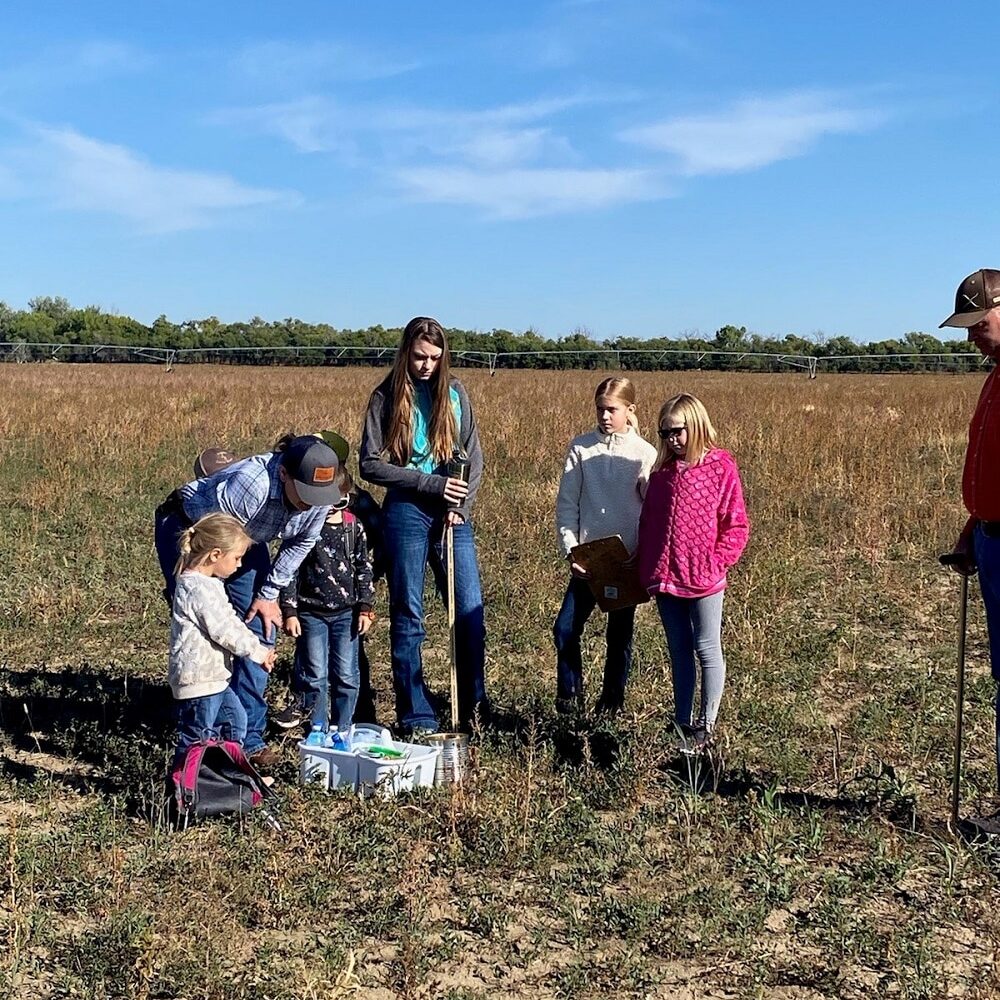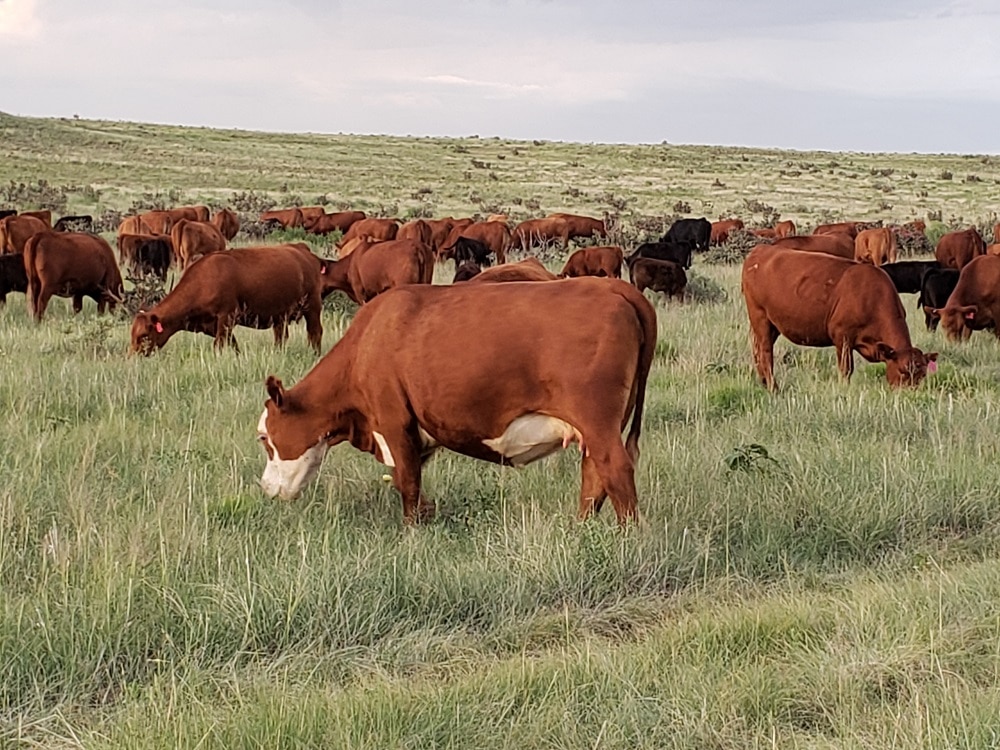New Mexico agriculturalists benefit from state’s Healthy Soil Program
During its first three years, the program has awarded approximately $600,000 to 62 on-the-ground projects to improve soil health. NMDA has allocated other program funding toward soil health education, outreach, training and research.
NMDA awarded funding to the CS Ranch for its “Using Cover Crops/Livestock/Adaptive Grazing to Restore Soil Health” project. The project addressed an old alfalfa/brome hay field that had been farmed/hayed since the 1930s but had declined after irrigation stopped over a decade ago.
Although drought prevented the project from reaching its full potential, Barmann said the funding was helpful, and she is thankful the state is realizing the importance of soil and the environment.
“The funding helped us get some roots in the ground, into these old fallow fields that were once hayed,” she said. “We had some wonderful grass growth, considering we had two years of drought with fewer than four inches of rain on this part of the ranch. Our big push is to eventually get cattle in to graze.”
Barmann said education is a huge part of the CS Ranch.
“As part of the non-profit Soil Health Academy, we’ve hosted two soil health schools and will host another one in May,” she said. “We’ve also helped organize numerous workshops in the county. Anytime we can get people to come learn in person is a great opportunity.”
She hopes the Healthy Soil Program will not only continue but grow. “We need so much momentum with this program right now.”
Healthy Soil Program funding may be used for agricultural projects in New Mexico that focus on one or more of five basic soil health principles named in the Healthy Soil Act: keeping the soil covered;

Students from a home-school cooperative learn about soil sampling, how to assess soil and how to identify plant species at the M-Scar Farm & Ranch in Maxwell. The M-Scar Farm & Ranch was awarded funding through the New Mexico Department of Agriculture’s Healthy Soil Program during the 2019-2020 pilot year of the program. Mira and Kevin Merritt used their “New Beginnings: Use of Ground Cover and Livestock to Improve Soil Health” project as a backdrop for educating children in the ways of generating healthy soil as a viable agricultural setting. (Photo by Mira Merritt)
The second year, the Merritts hosted students from a home-school cooperative for a hands-on experience. “We had the kids take soil samples, and they learned how to assess soil and identify plant species,” said Merritt.

The CS Ranch was awarded funding through the New Mexico Department of Agriculture’s Healthy Soil Program during the 2019-2020 pilot year of the program. The “Using Cover Crops/Livestock/Adaptive Grazing to Restore Soil Health” project proposal included applying high-intensity adaptive grazing with cattle during the growing season to speed up the process of re-establishing cover on the field to improve soil health. (Photo courtesy CS Ranch)
The Healthy Soil Program continually improves its outreach efforts, engagement and efficiency. NMDA hosted several webinars earlier this year to show potential applicants the steps to take to be considered for a grant.
New Mexico Agriculture Secretary Jeff Witte said the NMDA team is here to help potential applicants.
“Our goal is to have people come away from these webinars knowing the few simple steps they can take early on in order to succeed in the application process later,” said Witte.
Each year NMDA assembles a technical review committee – comprised of external partners in soil health, agriculture and Eligible Entity communities – to review grant applications. In 2022, NMDA will accept applications until May 12 in search of which on-the-ground projects to fund in fiscal year 2023. For more information, visit www.nmda.nmsu.edu/healthy-soil-program, email hsp@nmda.nmsu.edu or call 575-646-2642.
Between improvement of the grant process each year and the emergence of new public-private partnerships, the Healthy Soil Program will continue to be far-reaching.
